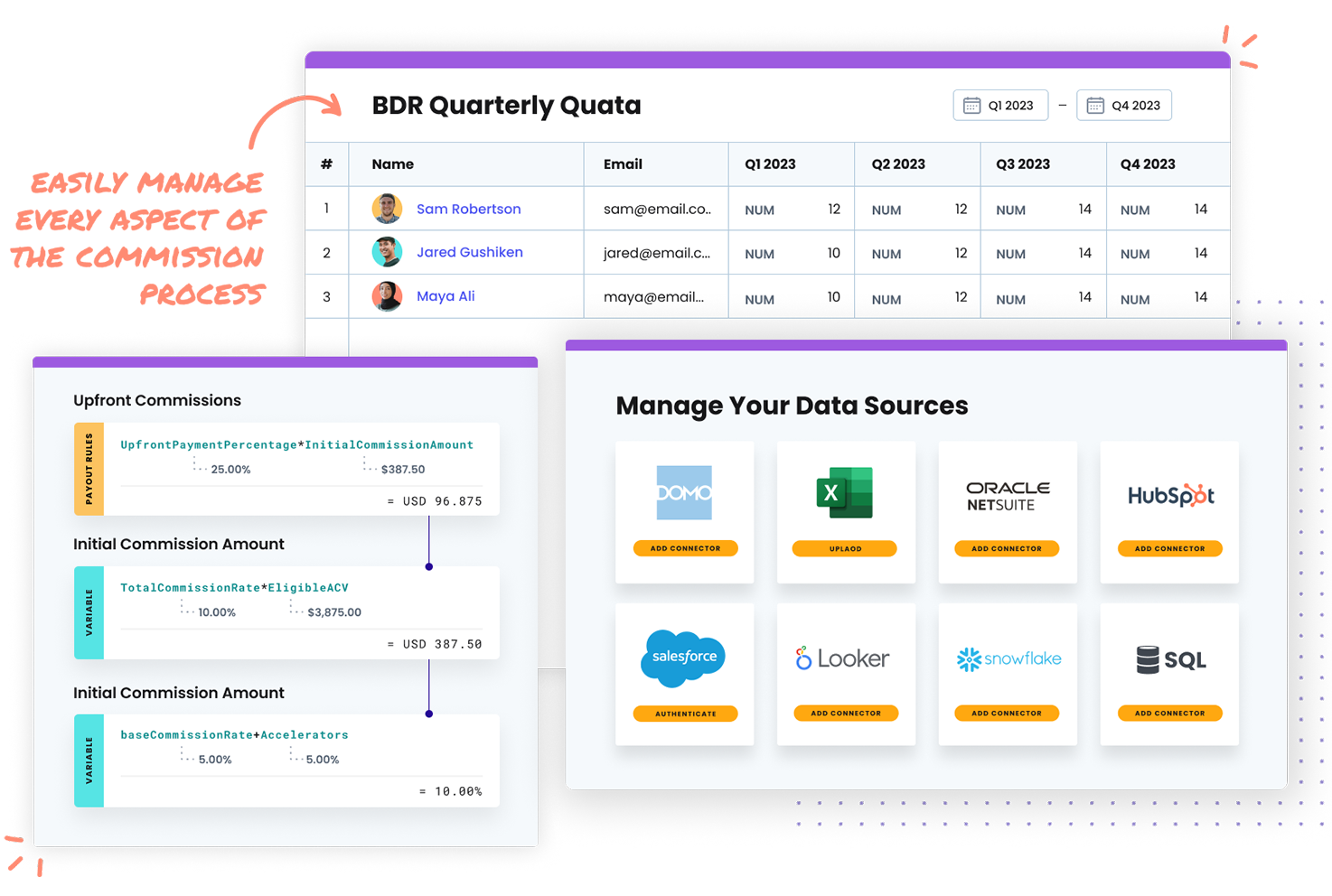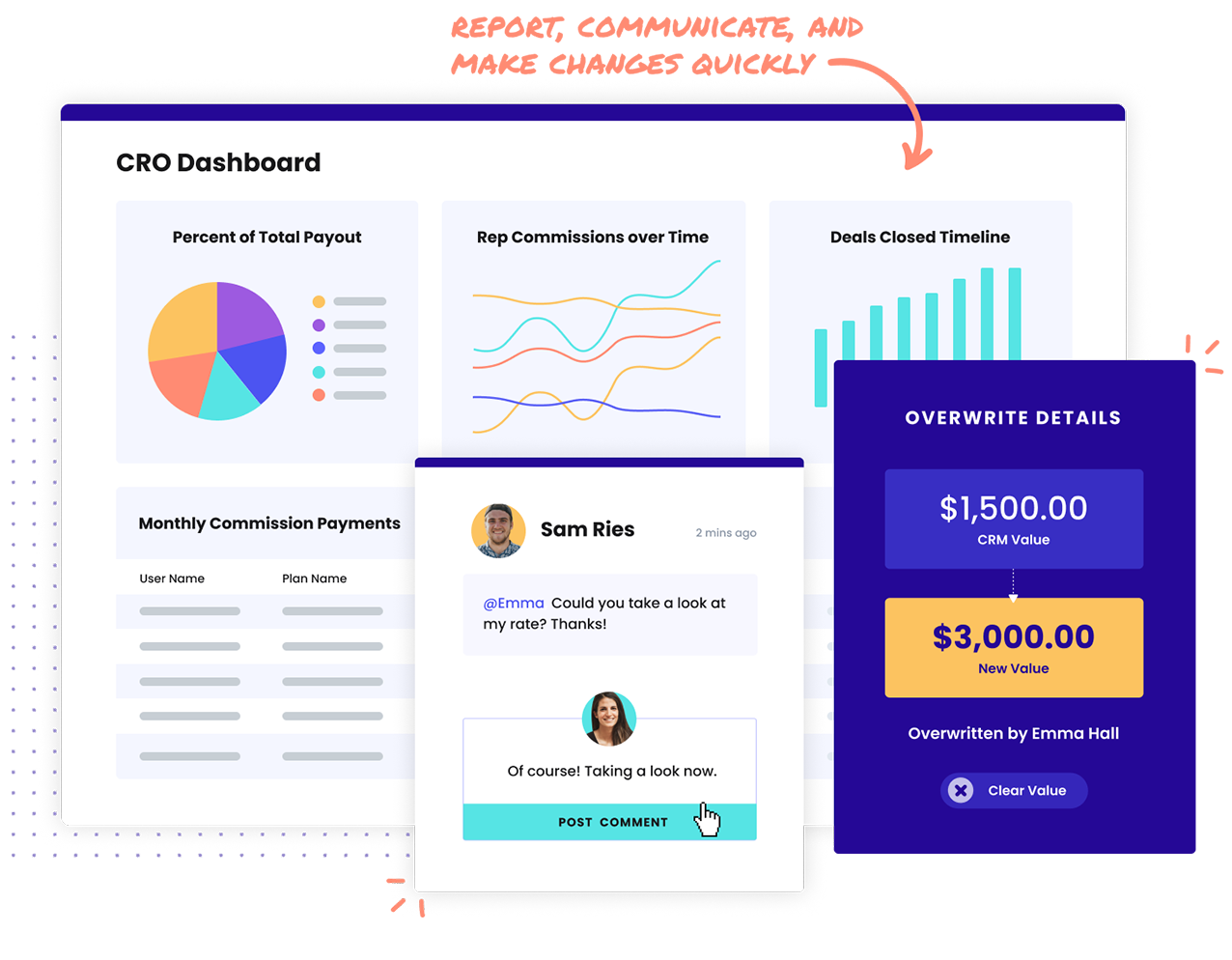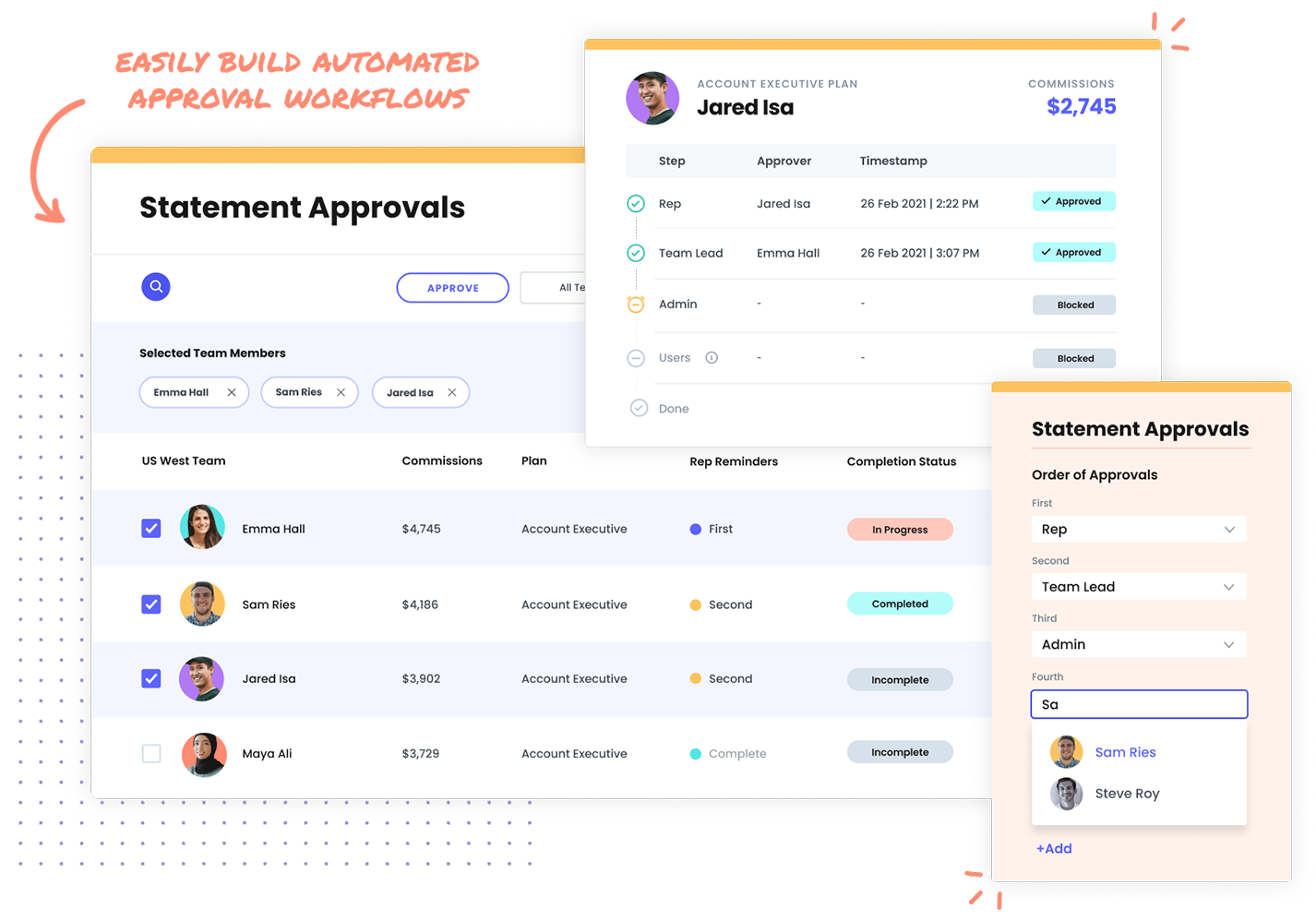Sales
Operations
Solutions
With Spiff, you can streamline your workflows, automate even the most complex commission structures, and create better alignment within your organization.
Ease-of-Use
Spiff combines the usability of a spreadsheet with the power of automation to eliminate complex manual processes.
Connect your CRM, ERP, HCM, payroll, or any other system to create a real-time, single source of truth for all your commission needs.
Set up commission plans in weeks, not months. Make changes on the fly, as you need them, no matter how complex your commission plan is.
Manage quotas with the flexibility of a spreadsheet and the power of a fully integrated system.


We’re spending way less than half the time processing commissions each quarter! With Spiff, everything is calculated in one place. The automation and scalability has made it easier on my team and has increased transparency for all teams at Sensor Tower.
Efficiency
Speed and efficiency are the name of the game to give you significant time back in your day.
Real-time commenting and email notifications for better alignment and faster cross-org collaboration.
Easily overwrite values inside Spiff at any level, from your source data to the most granular calculated value.
Easily build your own simplified, customized, and exportable reports for quick insights


Since implementing Spiff, our team has been able to reduce the time spent reconciling and processing commissions by 400% and the headcount involved from 4 people to 1 person.
Trust
Inaccuracies in commission statements create distrust between departments. End the war between sales and operations once and for all.
Machine learning automatically matches records for you and eliminates manual errors between systems.
Give your teams a way to view, manage, and approve commission statements before they’re sent out.
Simply add effective dates on any user, plan, or logic inside of the system. Lock historical statements to keep your books straight. Make one-off changes without worry.

